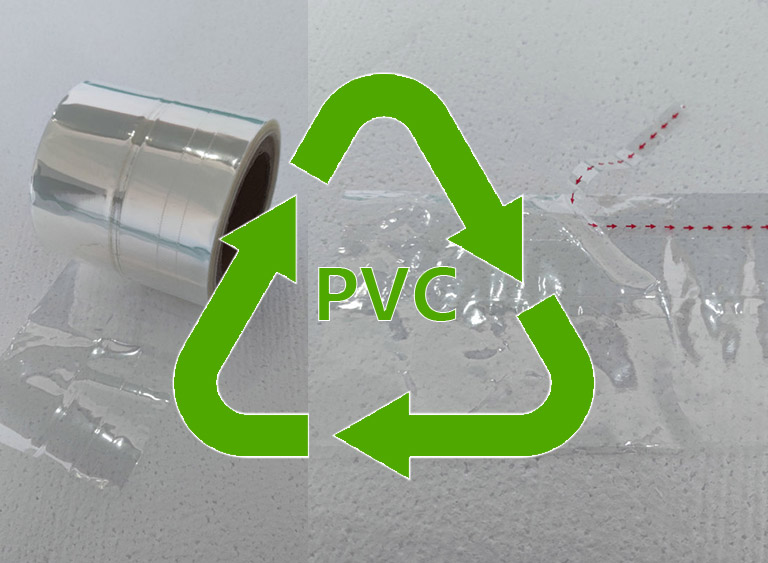PVC, or polyvinyl chloride, is a thermoplastic material that is widely used in a variety of applications due to its unique properties such as durability, flexibility, and resistance to moisture and chemicals. PVC film, in particular, is commonly used in packaging, signage, and construction industries. However, like other plastic materials, PVC film can also have a negative impact on the environment if not properly disposed of. In this post, we will explore the process of PVC film recycling and how it can be a sustainable solution for managing plastic waste.
What is PVC film?
PVC film is a thin, flexible sheet made of PVC material. It can be produced in a variety of colors, thicknesses, and finishes, such as glossy or matte. PVC film is widely used for packaging of products like food, pharmaceuticals, and electronics, as well as for manufacturing various products such as raincoats, shower curtains, and inflatable toys.
Different types of PVC film
There are two main types of PVC film: rigid and flexible. Rigid PVC film is commonly used in the packaging industry for creating blister packs, clamshells, and other forms of packaging. On the other hand, flexible PVC film is more commonly used in industrial and consumer applications, such as for packaging of meat and dairy products, construction materials, and consumer goods.
How is PVC film made?
PVC film is made by a process called extrusion. First, PVC resin and other additives such as plasticizers and stabilizers are mixed together in a high-temperature mixer. Then, the mixture is fed into an extruder, which heats and melts the mixture while shaping it into a thin film. After that, the film is cooled down and wound onto a roll for storage and transportation.
Common defects of PVC film
One common defect of PVC film is “fish eye,” which is a circular mark caused by impurities in the raw materials. Other defects include uneven thickness, wrinkles, and bubbles, which can reduce the quality and strength of the film and affect its performance in various applications.
The Application of PVC Film
PVC film has a wide range of applications, such as:
- Packaging Industry: PVC films are widely used in the packaging industry, especially for food packaging due to their high transparency and good barrier properties against water, gas, and other environmental contaminants.
- Construction Industry: PVC films are used for covering building materials like doors, windows, and walls to protect them from damage.
- Automotive Industry: PVC films are used for making automotive upholstery, seat covers, and dashboard covers.
- Medical Industry: PVC films are used for making medical equipment, IV bags, and tubing due to their excellent clarity and biocompatibility.
PVC Heat Shrinkable Film
PVC heat shrinkable film has a wide range of applications in various industries due to its unique properties. Like: Cosmetics, food, cleaning supplies, small toys and heat-shrinkable packaging.

Some of the general applications of PVC heat shrinkable film include:
- Packaging: PVC heat shrinkable film is widely used in the packaging industry for wrapping and protecting products. It is commonly used for packaging bottles, cans, and boxes, as it provides a tight and secure fit.
- Labeling: PVC heat shrinkable film is used for labeling products, such as bottles, jars, and cans. The film is printed with the label design, and when heat is applied, it shrinks tightly around the product, creating a label that conforms to the shape of the product.
- Tamper-evident seals: PVC heat shrinkable film is used for creating tamper-evident seals on products. The film is wrapped around the product and heated, creating a tight seal that cannot be removed without leaving evidence of tampering.
- Agricultural products: PVC heat shrinkable film is used in the agriculture industry for wrapping and protecting products, such as fruits and vegetables. The film helps to preserve the freshness and quality of the products during transportation and storage.
- Industrial products: PVC heat shrinkable film is used for wrapping and protecting industrial products, such as pipes, cables, and machinery. The film helps to protect the products from damage during transportation and storage.
How to Recycle PVC Film(Traditional Way)
Recycling PVC film is a complex process due to the presence of additives that can make the recycling process difficult. However, with the right technology and expertise, it is possible to recycle PVC film. Here are some of the common steps involved in PVC film recycling:
- Collection: PVC film waste is collected from various sources like industrial waste, post-consumer waste, and construction waste.
- Sorting: The collected PVC film waste is sorted according to its type, color, and additives.
- Shredding: The sorted PVC film waste is shredded into small pieces to facilitate the recycling process.
- Washing: The shredded PVC film waste is washed to remove any impurities like dirt, dust, and other contaminants.
- Separation: The washed PVC film waste is separated into its constituent parts, such as PVC and other additives.
- Extrusion: The separated PVC is melted and extruded into pellets, which can be used to manufacture new PVC products.
How to Recycle PVC Film(New-tech Way)
PVC film scraps or defected PVC film can be recycled onsite using a new-tech PVC film granulator. This machine is designed for easy use and requires no sorting, shredding, washing, or separation processes.
To recycle PVC film using this machine, simply put the PVC film into the feeding area of the granulator. The machine will then turn the PVC film into reusable PVC pellets that can be used to produce PVC film again and again. The granulator operates by using a screw to drive the PVC film through the machine and crush it into small pieces. The pieces are then heated and extruded into strands, which are cut into pellets as they come out of the extruding mold. The pellets are then cooled down via the consistent air flow generated by one or more blowers.
The advantages of using a new-tech PVC film granulator for onsite recycling are numerous. Firstly, it reduces the amount of waste that would otherwise end up in landfills, contributing to environmental pollution. Secondly, it saves money that would be spent on disposal fees for the PVC film scraps or defected PVC film. Lastly, it creates a sustainable production cycle, where PVC film can be recycled and reused to make new products, reducing the need for virgin materials.
Conclusion
PVC film is a versatile material used in many industries, but its disposal can pose environmental challenges. However, with the use of a new-tech PVC film granulator, PVC film can be recycled onsite, reducing waste and contributing to a more sustainable production cycle. It’s important for industries to consider the impact of their waste on the environment and take steps to reduce it through responsible recycling practices.

